Basic information about the field
Area: 9,62 ha
Soil type: Humus rich coarse sand
Field is fairly even and clearly shaped. It is partially located on ground water area, which is setting some limitations for the fertilizers.
Crop rotation
2024 A: Barley, Hermanni+grass seed, B: field bean, Sampo
2023 Pasture, barley, experiments
2022 Silage grass
Research and experiments
2023 Pea and spring triticale whole grain silage -experiment, mixed plantation squares -experiment, mixed population square (LuoVaMix), variety test of native grains (MoPe), hemp oil plant
Extra fertilizer for grass (Soilfood)
Observation lanes for grass (Naturcom)
Cultivation activities
Cultivation activities
Pasture, barley, tests 1-5
14.5.2023 Harrowing
15.5.2023 Sowing: mixed plantation squares -experiment, mixed population square and native grains
22.5.2023 Sowing: hemp oil plant and barley rest of field
23.5.2023 Sowing: pea and triticale
9.6.2023 Reseeding; oil plants to mixed plantation squares -experiment
16.8.2023 Ploughing
22.8.2023 Tillage with disc harrow
5.9.2023 Harvesting: barley, yield 2229,55 kg/ha
7.9.2023 Harvesting of the mixed plantation squares
8.9.2023 Sowing: winter rye Reetta, 100 kg/ha
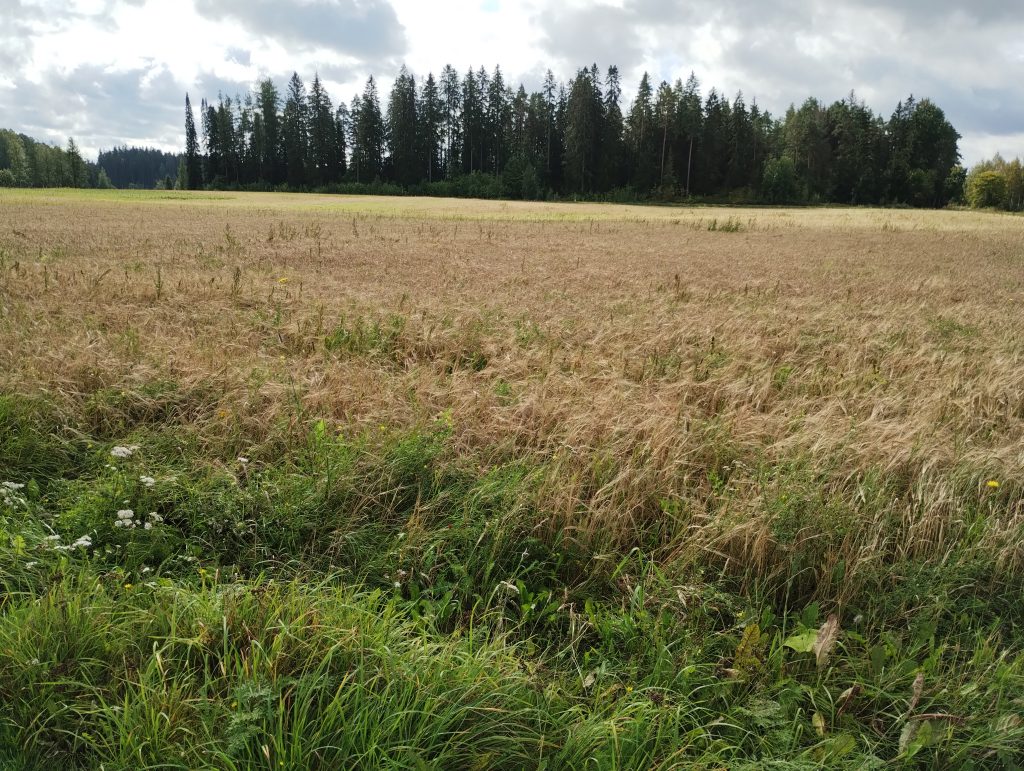
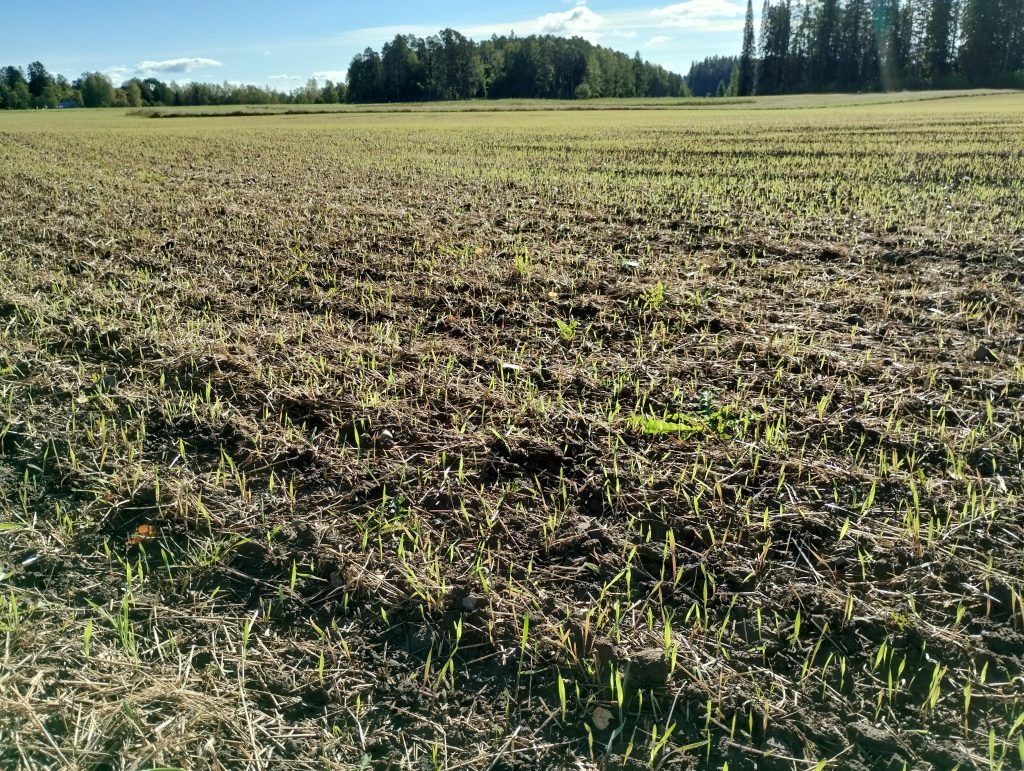
1. Mixed plantation squares (LuoVaMix)
The experiment examines mixed cultivation of woody oilseeds and legumes compared to pure crops.
Sowing density pcs/m2
Pure crops: A) fava bean Louhi 70, B) pea Ingrid 120, C) annual turning rape Synthia 250, D) annual rape Laima 150
Mixed cultivation: A+D area A 56+90, A+D area B 42+120, B+C area A 96+150, B+C area B 72+200
Fertilization
Viljo organic fertiliser 8-4-4
Pure pea: no fertilization
Turnip rape and oilseed rape: 500 kg/ha (40 kg N/ha)
Mixed cultivation: 1000 kg/ha (80 kg N/ha)
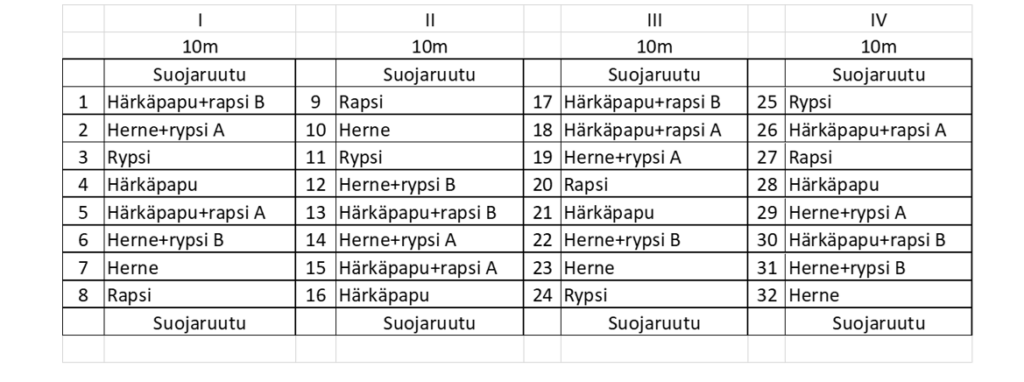
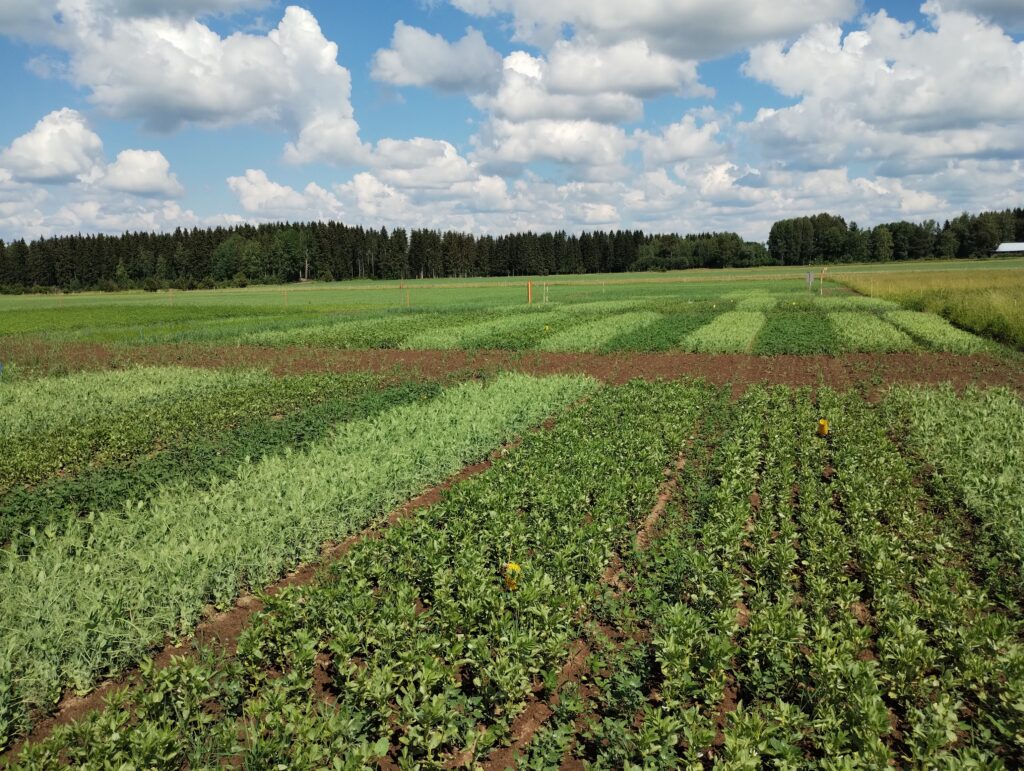
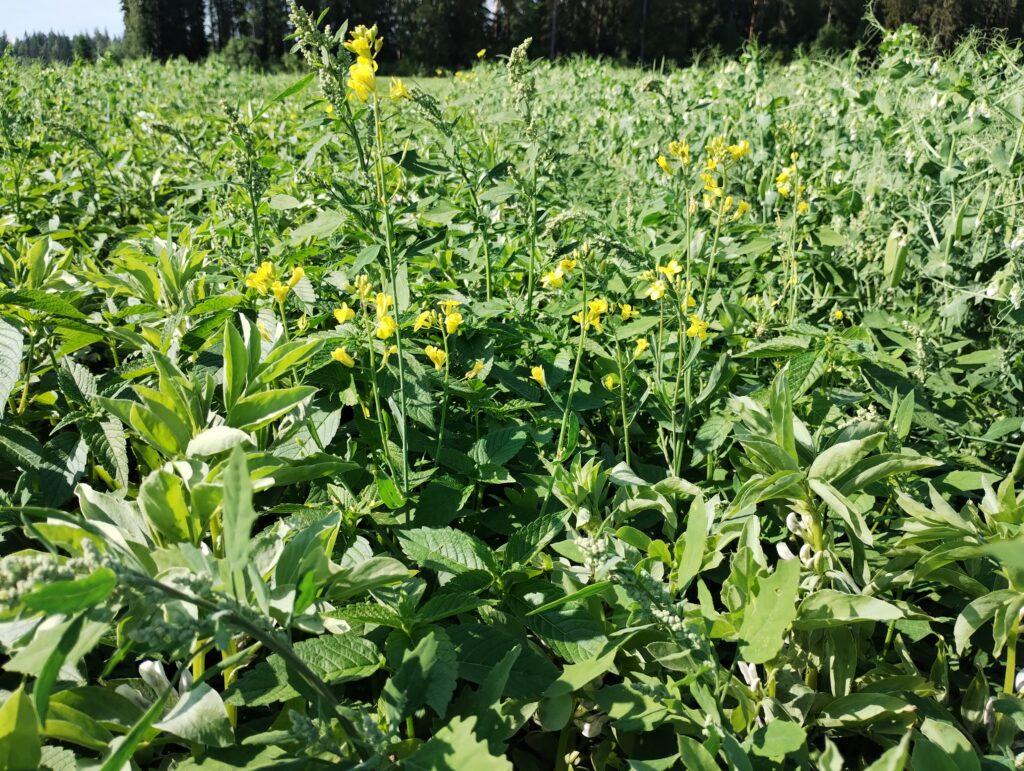
2. Mixed population -square (LuoVaMix)
The experiment examines the success of different plants as mixed crops. There are two replicates.
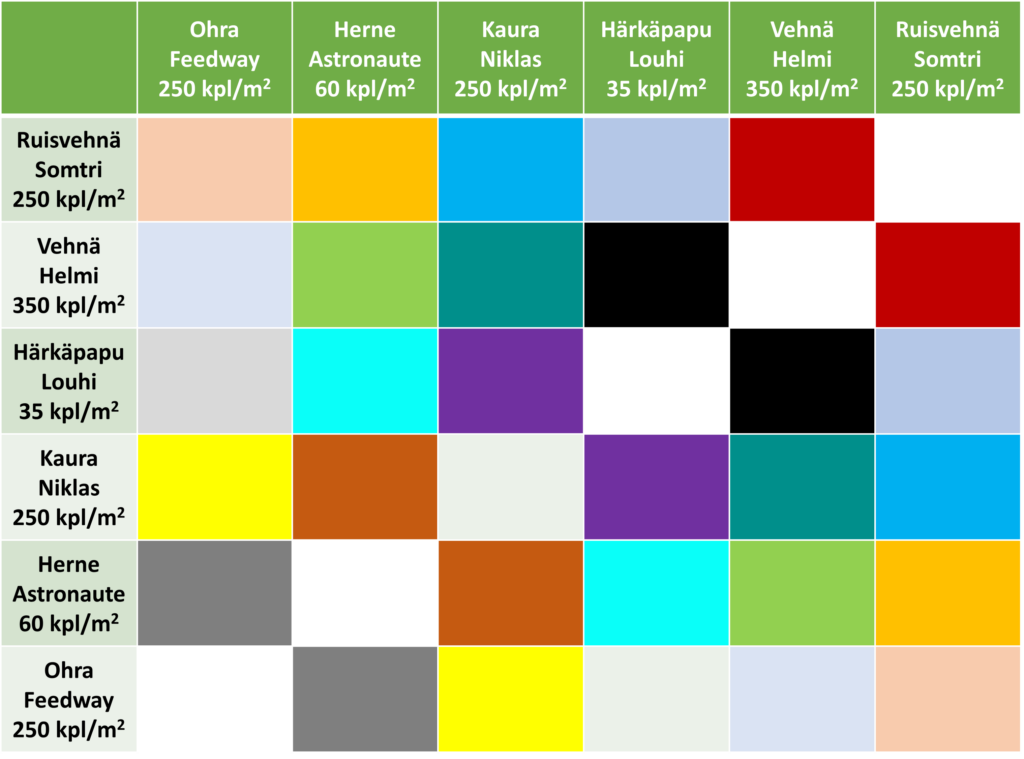
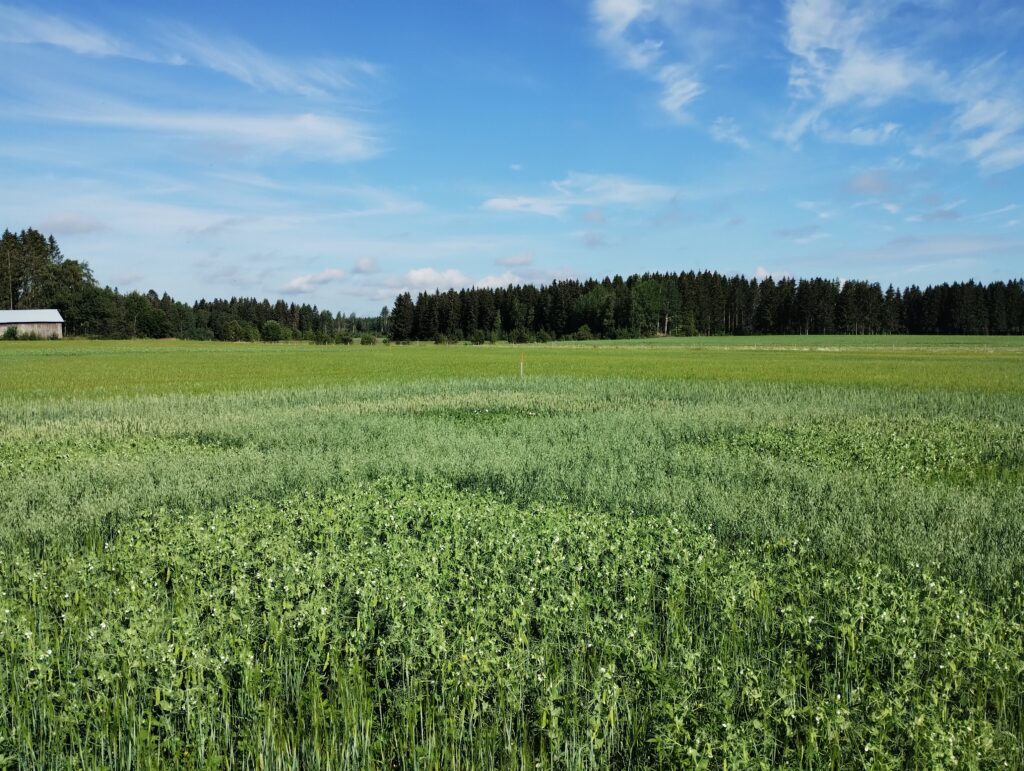
3. Native grains (MoPe)
Test squares are used to study cultivation properties and there cultivated for increase of varieties of old and native seeds.
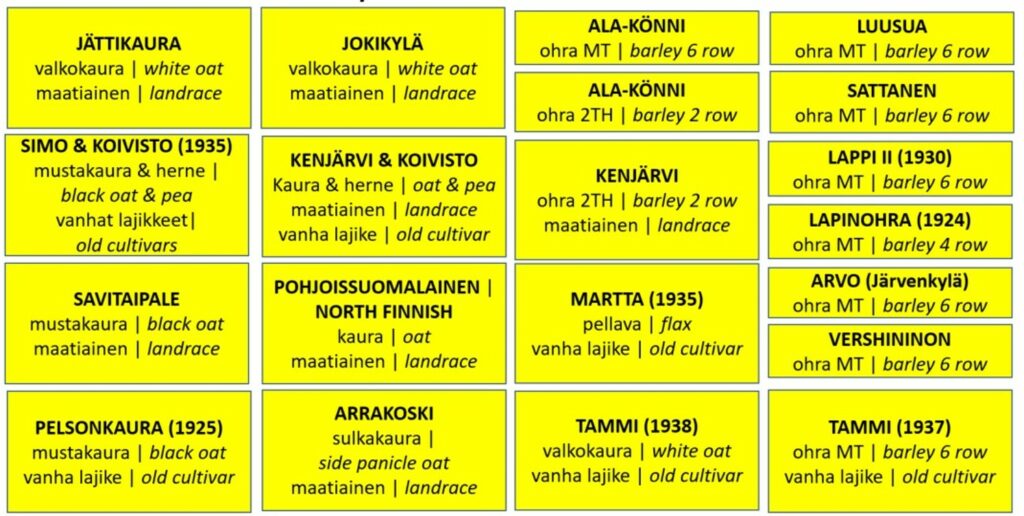
4. Hemp oil plant
The experiment observes the impact of sowing time and density on growth.
Line 1: Sown 22.5. Finola 22 kg/ha, fertilization Fertilex (6-1-2) 500 kg/ha
Line 2: Sown 22.5. Finola 27,4 kg/ha, fertilization Fertilex (6-1-2) 500 kg/ha
Line 3: Sown 30.5. Finola 30 kg/ha, fertilization Fertilex (6-1-2) 500 kg/ha
Based on the results of the experiment, the highest seeding rate also produced the best yield.
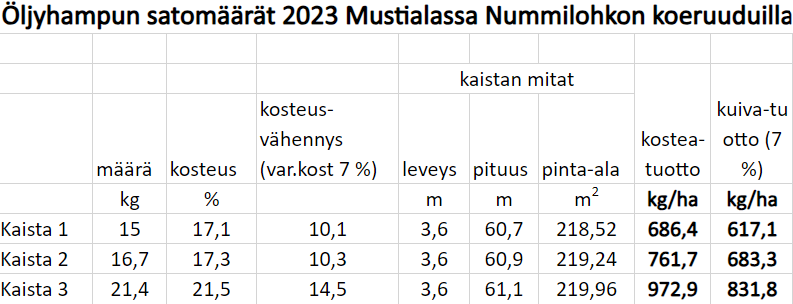
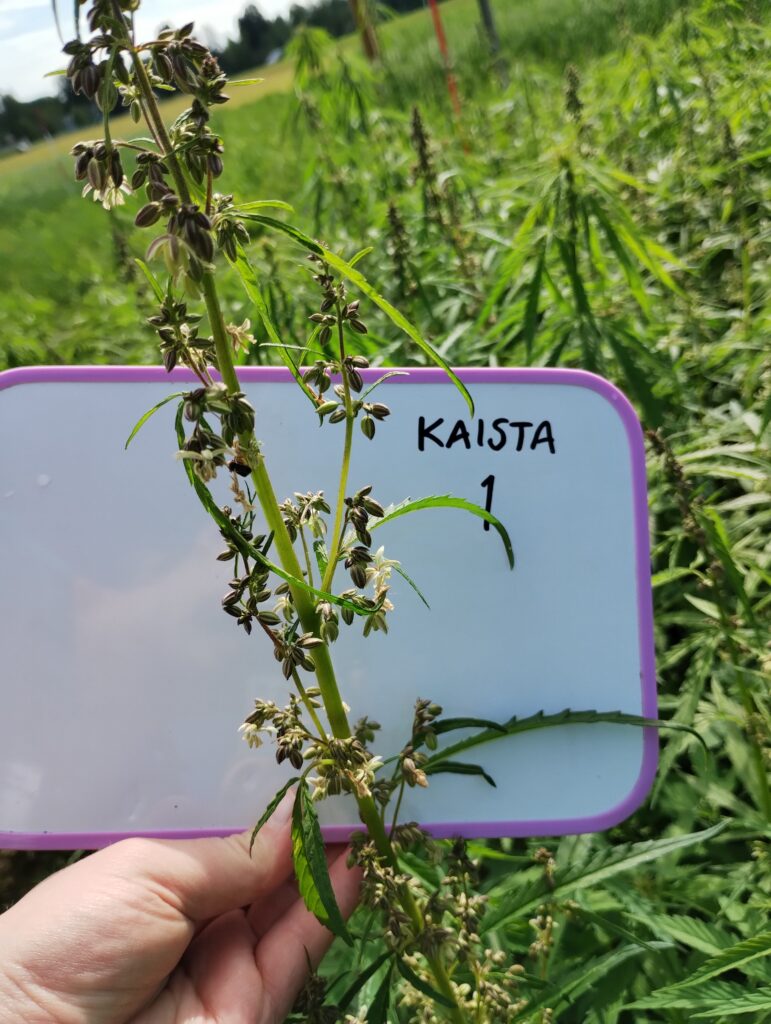
5. Pea and spring triticale whole grain silage -experiment
The experiment investigates the effect of different mixture ratios on crop yields, feed quality and harvesting technology.
Line 1 Pea Arvika 50 kg/ha and triticale Somtri 150 kg/ha
Line 2 Pea Arvika 75 kg/ha and triticale Somtri 125 kg/ha
Line 3 Pea Arvika 100 kg/ha and triticale Somtri 100 kg/ha
Here you can see test results

Cultivation activities
Silage grass
10.5.2022 Fertilizer, spreading on surface, potassium sulfate 200 kg/ha
19.5.2022 Harrowing the weeds
13.6.2022 Harvesting silage grass, yield 1400 kg dm/ha
28.7.2022 Harvesting silage grass, yield 1200 kg dm/ha
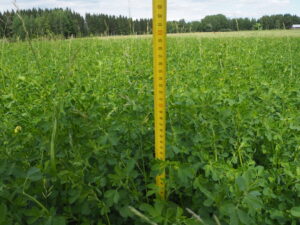
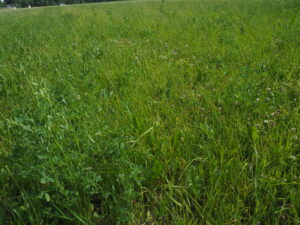
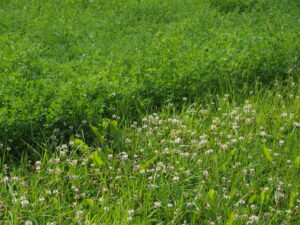
Autumn fava bean experiment, Augusta
10.8.2022 Sowing, batch 11, 20-60 pcs/m2
10.8.2022 Sowing, batch 13, 20-60 pcs/m2
19.8.2022 Sowing, batch 6, 30-60 pcs/m2
19.8.2022 Sowing, batch 9, 30-60 pcs/m2
30.8.2022 Sowing, batch 2, 60 pcs/m2
30.8.2022 Sowing, batch 5, 60 pcs/m2
9.9.2022 Sowing, batch 1
9.9.2022 Sowing, batch 3
26.9.2022 Observation, photos
Autum canola experiment, Legato
2.8.2022 Sowing, stripe 1, 100 pcs/m2
10.8.2022 Sowing, stripe 2, 100 pcs/m2
19.8.2022 Sowing, stripe 3, 100 pcs/m2
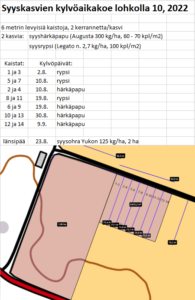
Map about the experiments on the field in 2022
Cultivation activities
Silage grass
19.4.2021 Raking the grass
5.5.2021 Sowing the fertilizer stripe (6 m wide), 111 kg/ha (Soili 1-0-18-11)
11.6.2021 Harvesting silage, yield 3873 kg dm/ha
21.7.2021 Harvesting silage, yield 1856 kg dm/ha
17.-18.9.2021 Harvesting silage, yield 991 kg dm/ha
Field scanning: Nummilohko
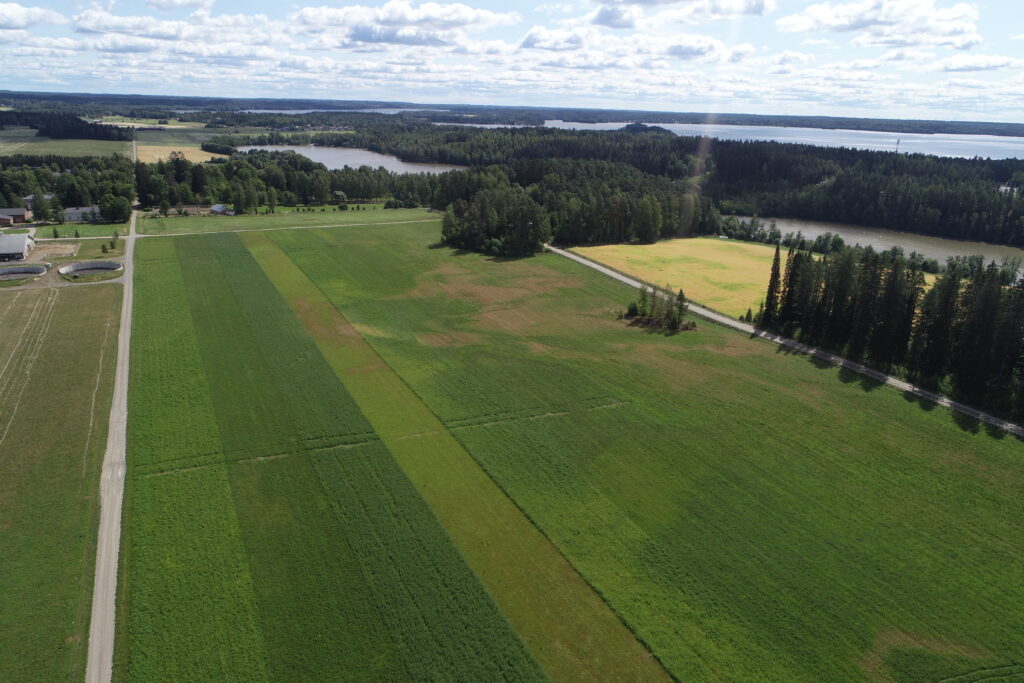
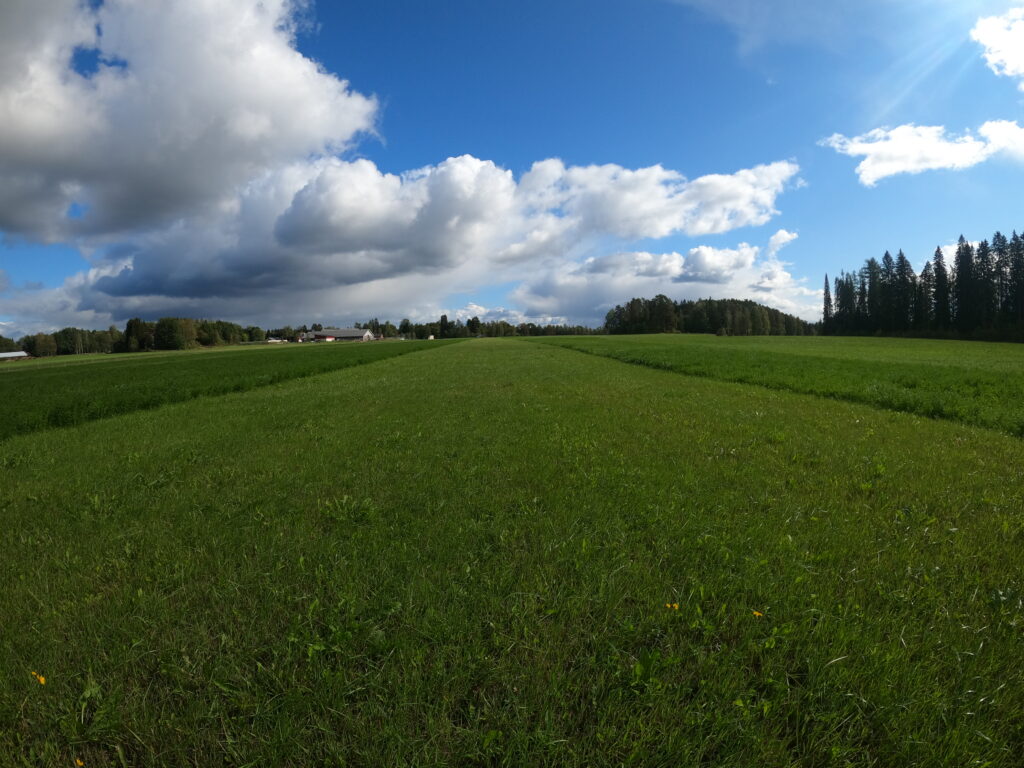
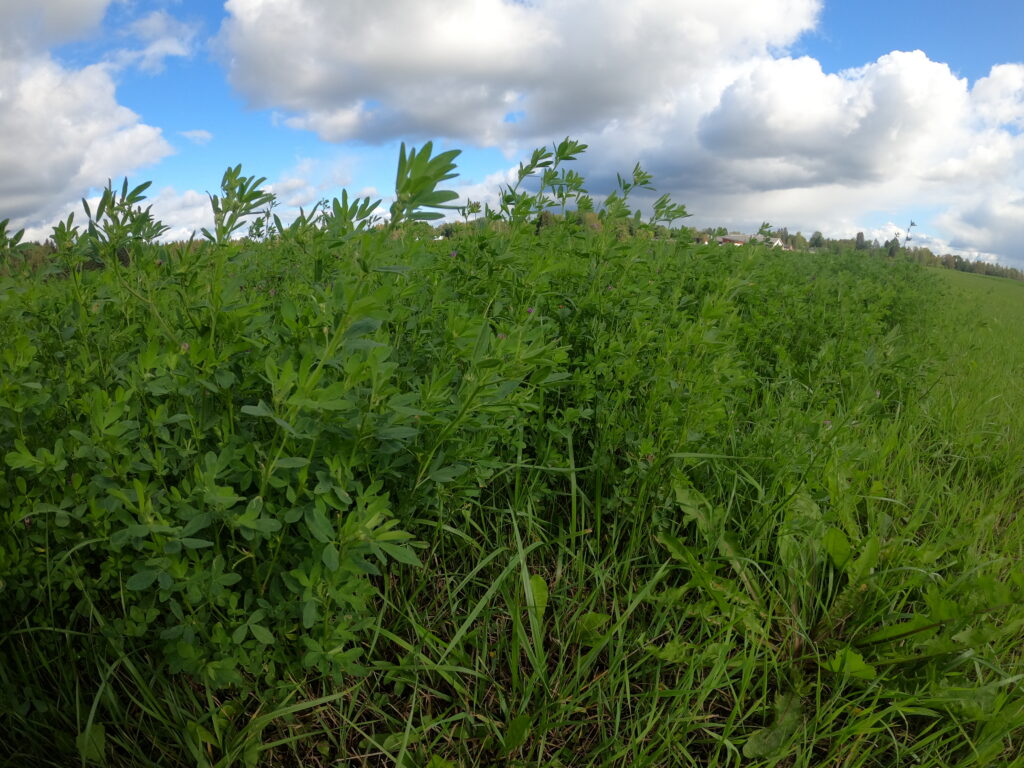
Cultivation activities
Perennial silage grass
Fertilizer, Soilfoor Boost NK vinasse 2 tn/ha (about 2 ha area)
14.6.2020 Mowing
14.6.2020 Swathing
14.6.2020 Harvesting silage
26.-29.6.2020 Irrigation
30.7.2020 Harvesting silage, yield 2002 kg dm/ha
19.6.2020 Harvesting silage, yield 1465 kg dm/ha
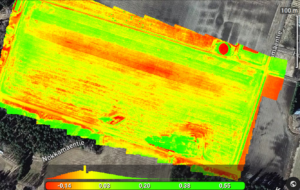
22.05.2020 COLOR-index image. Seven grass lanes can be detected from the image and there are clear differences in growth.
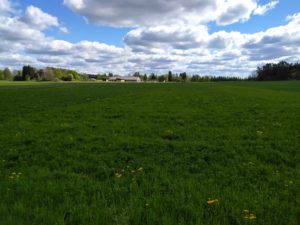
29.5.2020 Growth
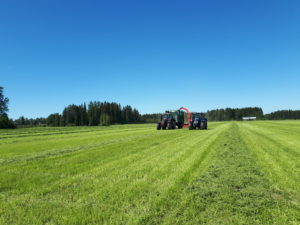
14.6.2020 The best yield of the first feed harvest came from the block Nummilohko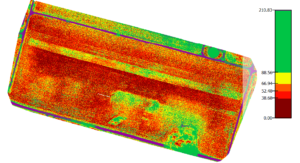
23072020 different sowing mixtures can clearly be seen, especially at the north end.
Fertility analysis 5.5.2023 experiment area.
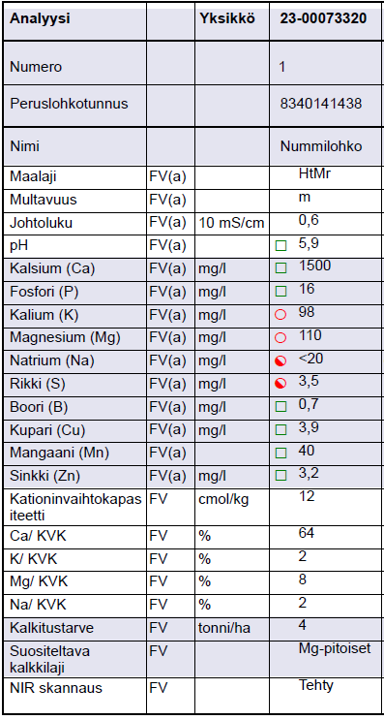
Fertility analysis 26.11.2021:

Vocabulary for reading fertility analysis:
Numero= number
Peruslohkotunnus= basic field id-number
Nimi= name
Maalaji= soil type
Multavuus= type of humus
Johtoluku= electrical conductivity
Kationinvaihtokapasiteetti= cation exchange capacity
Kalkitustarve= need for liming
Suositeltava kalkituslaji= recommended lime type
Hehkutushäviö= annealing loss
NIR skannaus= NIR scanning
Yksikkö= unit
Tonni= ton
Vapaavalintainen= free choice
Field Nummilohko sampling lines 3-6:
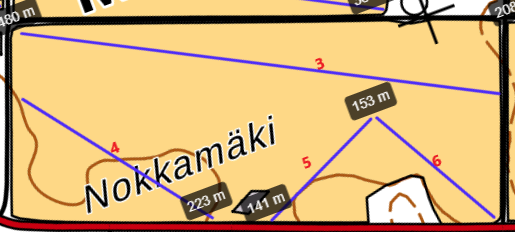
Soil NIR-analyysi (26.11.2021), line 5
2021 Silage grass
2019 Oat (protective crop)
2018 Fava bean, Kontu
2017 Spring rapeseed, Proximo
2016 Inter cropping barley Steif, oat Matty and collector plant
